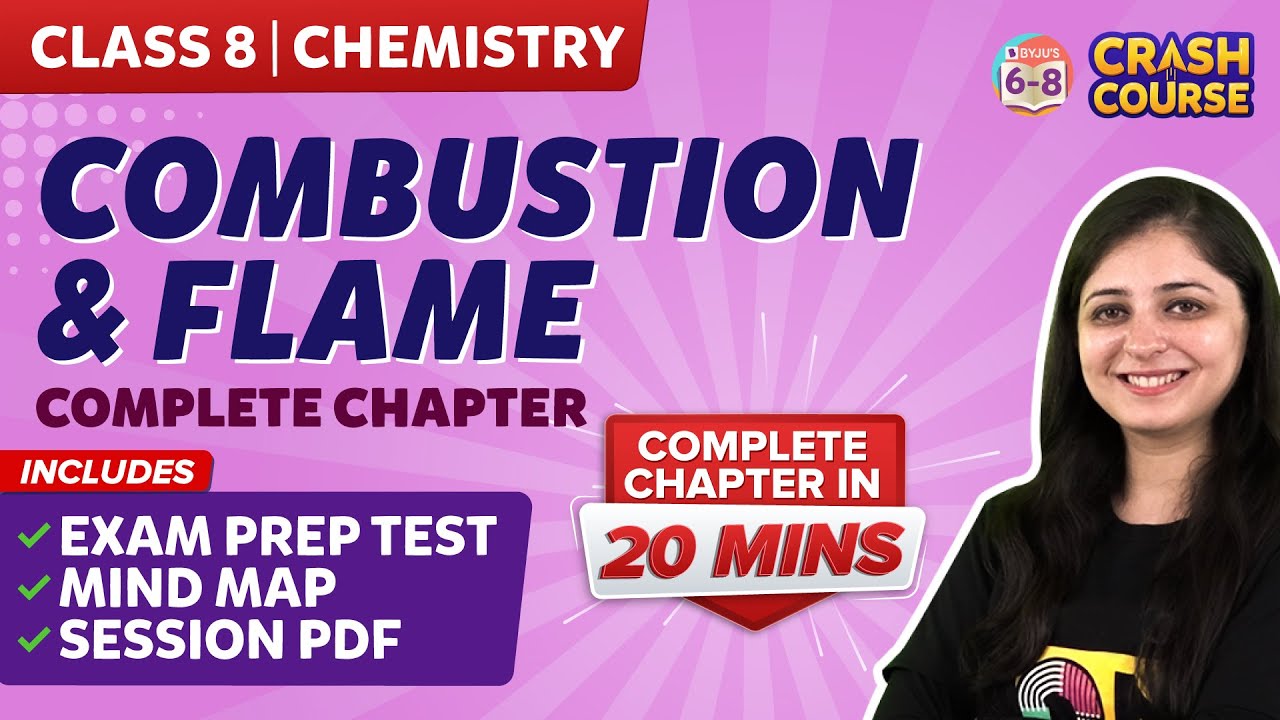Combustion and Flame - Types of Combustion - Candle Flame Zones - Video for Kids
Summary
TLDRIn this video, viewers learn about combustion and flames. The process of combustion involves a chemical reaction between fuel and oxygen to release energy, seen in examples like burning wood or cooking with gas. The video covers five types of combustion: rapid, explosion, spontaneous, complete, and incomplete. It also explains the fire triangle, which consists of fuel, heat, and oxygen. Additionally, the video explores the anatomy of a flame, from the outer blue zone to the inner dark zone. This educational content is ideal for understanding basic combustion and fire science.
Takeaways
- 😀 Combustion is a chemical process that releases energy from a fuel-oxygen mixture.
- 😀 Examples of combustion include burning wood, using natural gas for cooking, or burning coal.
- 😀 The basic combustion reaction involves hydrocarbons and oxygen, producing heat and energy.
- 😀 There are five types of combustion: rapid combustion, explosion, spontaneous combustion, complete combustion, and incomplete combustion.
- 😀 Rapid combustion occurs when large amounts of heat and light are released in a short time, such as in a spirit lamp.
- 😀 An explosion is a sudden release of heat, light, and gas, often seen in bursting crackers.
- 😀 Spontaneous combustion happens when a fire starts without external heat, often due to internal heat generated by rapid oxidation.
- 😀 Complete combustion occurs when there is enough oxygen, and it produces no smoke, like burning LPG.
- 😀 Incomplete combustion happens when there is insufficient oxygen and produces soot, such as when burning coal.
- 😀 The fire triangle consists of three elements needed for combustion: fuel, oxygen, and heat.
- 😀 A flame is the visible part of fire and consists of three zones: the outer (blue, hottest), middle (yellow, moderately hot), and inner (dark, with unburnt wax vapors).
Q & A
What is combustion?
-Combustion is a basic chemical process that involves the release of energy from a fuel and air mixture. This process is commonly seen when wood or coal burns or when natural gas or LPG is used for cooking.
What is the chemical formula for combustion?
-The general formula for combustion is a hydrocarbon reacting with oxygen to produce heat and energy. It can be expressed as: Hydrocarbon + O2 → Heat + Energy.
What are the five types of combustion?
-The five types of combustion are: rapid combustion, explosion, spontaneous combustion, complete combustion, and incomplete combustion.
What is rapid combustion?
-Rapid combustion is a process in which large amounts of heat and light are released in a very short span of time, like when a spirit lamp is lit, producing heat and light quickly.
What is an explosion in terms of combustion?
-An explosion occurs when a sudden reaction takes place, releasing heat, light, and a large amount of gas. It is a very rapid form of combustion, often seen in fireworks or crackers.
What is spontaneous combustion?
-Spontaneous combustion is the outbreak of fire without any external heat source. It typically occurs when combustible materials, such as hay, straw, or coal, are stored in bulk and heat is generated internally through rapid oxidation.
What is the difference between complete and incomplete combustion?
-Complete combustion occurs when there is enough oxygen, producing no smoke and clean burning, such as with LPG. Incomplete combustion happens when there is insufficient oxygen, leading to the production of soot, such as when coal burns.
What is the fire triangle?
-The fire triangle consists of three essential elements required for combustion: fuel, oxygen, and heat. These three components must be present for a fire to start and continue.
What are the three zones of a candle flame?
-A candle flame consists of three zones: the outer non-luminous zone (blue and hottest, due to complete combustion), the middle luminous zone (yellow, moderately hot, and bright), and the inner dark zone (dark and consists mostly of unburnt vapors).
What determines the temperature and color of a flame?
-The temperature and color of a flame depend on the type of fuel used in the combustion process. Different fuels produce different temperatures and colors of flame.
Outlines

Dieser Bereich ist nur für Premium-Benutzer verfügbar. Bitte führen Sie ein Upgrade durch, um auf diesen Abschnitt zuzugreifen.
Upgrade durchführenMindmap

Dieser Bereich ist nur für Premium-Benutzer verfügbar. Bitte führen Sie ein Upgrade durch, um auf diesen Abschnitt zuzugreifen.
Upgrade durchführenKeywords

Dieser Bereich ist nur für Premium-Benutzer verfügbar. Bitte führen Sie ein Upgrade durch, um auf diesen Abschnitt zuzugreifen.
Upgrade durchführenHighlights

Dieser Bereich ist nur für Premium-Benutzer verfügbar. Bitte führen Sie ein Upgrade durch, um auf diesen Abschnitt zuzugreifen.
Upgrade durchführenTranscripts

Dieser Bereich ist nur für Premium-Benutzer verfügbar. Bitte führen Sie ein Upgrade durch, um auf diesen Abschnitt zuzugreifen.
Upgrade durchführenWeitere ähnliche Videos ansehen

Chapter 7 | Combustion | Class 8 DAV Science | Chapter Study | (Part 1) 🔥🔥🔥

What Is Fire?

HOE komen SPIEREN aan ENERGIE? | Biologie Les HAVO / VWO | VERBRANDING in het LICHAAM

Combustion and Flame - Complete Chapter | Mindmap with Explanation | Class 8

Key Stage 3 Chemistry - Combustion, Thermal Decomposition and Oxidation

Perbedaan Reaksi Eksoterm dan Endoterm
5.0 / 5 (0 votes)
